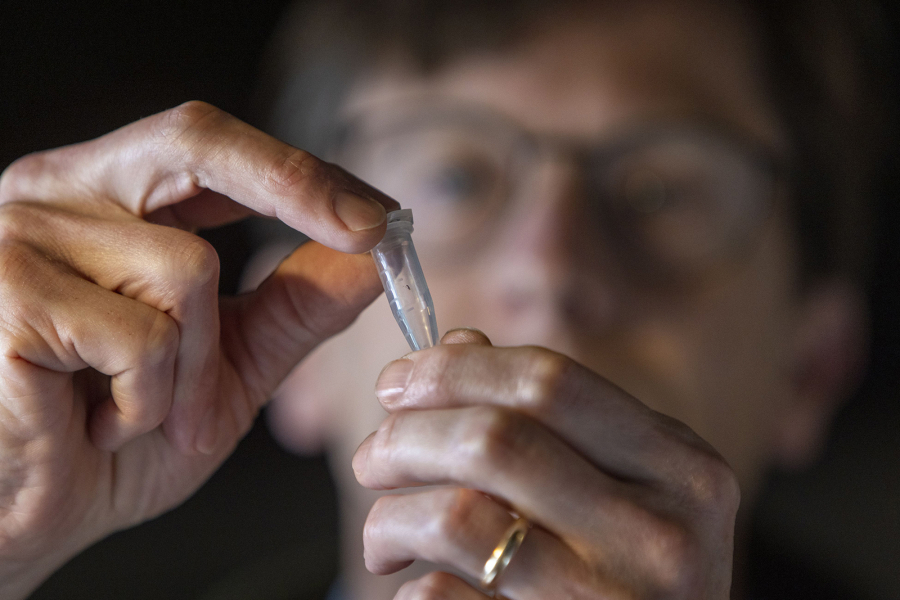PHILADELPHIA — When Colin Purrington looked at a sample of dried figs under a microscope recently, he answered a question that had been bugging him for years.
Inside the chewy fruits, he found the shriveled remains of several very small insects, including a type of parasitic wasp.
A retired Swarthmore College biology professor, Purrington says his discovery is no cause for concern and that the presence of the insects makes scientific sense. Many types of figs are pollinated by wasps, and like the one he found, they typically are no bigger than the head of a pin.
“I’m still going to eat figs, and I’ll be happy about it,” he said.
Still, Purrington’s finding has caused a bit of a stir. More than 175,000 people have viewed his tweet of a blog post that he wrote about bugs in figs, responding with varying degrees of fascination or distaste. Michelle A. Rodrigues, a biological anthropologist at Marquette University, labeled it #FigGate.
Traces of insects can be found in many other foods, such as spices and canned fruits, and it’s allowed by the FDA. Purrington, who retired from Swarthmore in 2011 but still lives nearby, decided to look for insects in figs recently after taking an online class in wasp identification.
The course reminded him of an age-old debate in entomology circles. It was well-known that wasps could be found in wild figs, as female insects crawl inside the fruits to lay their eggs.
But it was unclear whether the insects could be found inside commercial figs, especially after they were dried and packaged for sale. For varieties that require pollination by wasps, farmers try to limit the number of insects that penetrate each fig, lest the fruit split open, he said. And the fruits contain an enzyme that dissolves the insects.
Except not completely, as Purrington would learn.
He cut open a dried fig and saw a small dark spot just inside its ostiole — a small opening on the round bottom of a fig, through which female wasps crawl to lay their eggs. He placed the specimen under a microscope, and sure enough, it was the remnant of a wasp.
“I can see why no one’s really done it before,” he said. “Your hands are completely sticky.”
The fruits came from Turkey, in a bag he bought at Trader Joe’s, but he is confident that wasps could be found in dried figs from other stores or growing locations.
But not if they’re grown in the U.S., says the California Fig Advisory Board. California is the nation’s lone producer of commercial dried figs, and farmers there no longer grow fig trees that require insect pollination, a board spokeswoman said.
Likewise, there are no wasps in Fig Newtons, according to other scientists who have looked. The cookies’ fruity filling is strained before baking.
As for the figs from Trader Joe’s, the store did not respond to a request for comment.
The wasp was not the only invader that Purrington discovered. When he cut open more figs from his bag, he found several other insects, including a very small beetle.
Asked about the findings, Jon K. Gelhaus, curator of entomology at the Academy of Natural Sciences of Drexel University, said he was intrigued.
“It will be fun to check my own fresh figs next year,” he said.
Purrington says there’s no harm if a person ingests an occasional six-legged critter or two, unless they are allergic.
Insects are eaten in many parts of the world, seen as an eco-friendly, valuable source of protein. Even in the U.S. where insects are not a common food source, most people have probably eaten them by accident, he said.
“If you wanted to avoid eating insects in fruits and vegetables,” he said, “you’d starve to death.”



